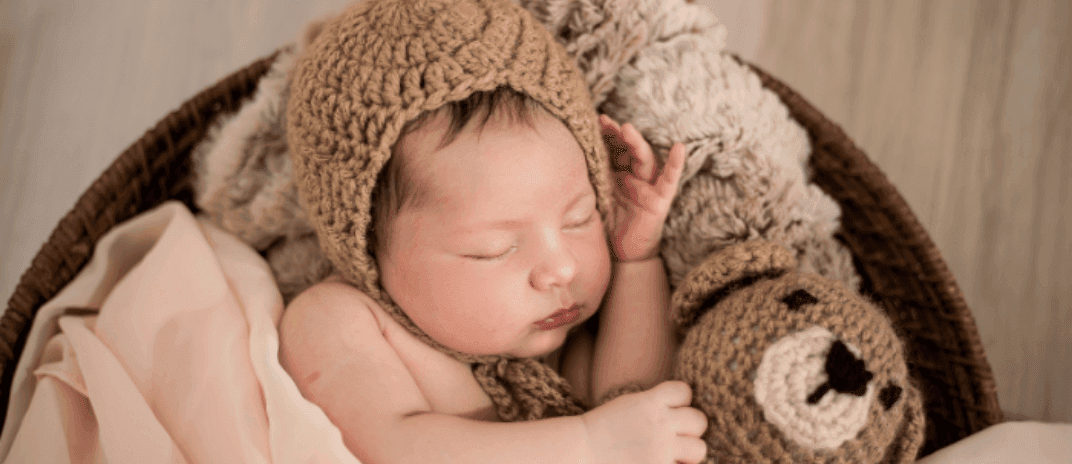


How to make a baby sleep well? It must be a headache problem for every parent. The various baby sleep training methods circulating on the Internet are both surprising and suspicious. When can you start gentle sleep training your baby? In this post, I’ll try to give you the information that’s essential to know before starting gentle sleep training.
There are many baby sleep apps out there, but if you want the most comprehensive and most detailed (not to mention most popular) option for new moms & dads, check out ShutEye®.
Gentle sleep training is a method of teaching infants and young children to sleep through the night using a more gradual, nurturing approach, without resorting to leaving them to cry alone for extended periods of time.

Gentle sleep training methods focus on creating a soothing and consistent bedtime routine, providing comfort and reassurance to the baby as they learn to fall asleep on their own, reducing night wakings and promoting longer, more restful sleep.
Gentle sleep training can help:

The question that most new parents ask is, “When can I start gentle sleep training?” It’s natural to be anxious about starting your baby on a sleep schedule. There are many things you’ll want to consider when planning for an age-appropriate bedtime for your baby.
The answer is not so simple. Gentle sleep training is very effective in helping your baby sleep through the night. But it’s not as simple as starting from day one and working towards the goal of being able to put your baby down without crying.
If you don’t know how to approach gentle sleep training, it could cause unnecessary stress for you and your baby. You might do everything right but still, end up with no success!
In fact, starting gentle sleep training around 6-8 weeks old is great.
Sleep training a baby involves establishing a bedtime routine and teaching them to self-soothe and fall asleep on their own. It’s important to create a calm and consistent bedtime environment, with activities like a warm bath, reading a story, and soothing music.
When putting the baby back to sleep, parents should place them in the crib when they are drowsy but still awake to help the baby learn to fall asleep independently. It’s also crucial to set clear boundaries and stick to the routine, even if it means some initial tears. With time and consistency, the baby will learn to sleep through the night and develop healthy sleep habits.

Each category of viewpoint has its own viewpoints and methods. The viewpoints of the American Academy of Pediatrics are relatively moderate and require a little effort to achieve, but they will not find it difficult to accept.
The core view of the American Academy of Pediatrics is to respond appropriately to the baby’s needs so that the baby understands that parents are always paying attention to them and are ready to help them, but they will not provide excessive help.
Putting the baby to sleep should not be a dehumanizing mechanical process.
Such as “Let the baby cry for 5 minutes on the first night, 10 minutes on the second night… and so on”— This kind of parenting is more ruthless than training pets. Sleeping well is sometimes inborn, sometimes it cultivated, but it‘s not forced.
This method (cry immunity method) is unwise, you will face the danger of losing your baby’s trust, and you may gradually lose your sense of his crying. You can’t force your baby to sleep, what you can do is create a better sleep-inducing environment.

Carry your baby on your back during the day, which helps your baby to fall asleep at night.
It is recommended that the baby and parents sleep in the same bed, and then gradually separate into bed when they are two or three years old.
Take regular naps during the day and go to bed regularly at night.
A fixed sleep ritual before going to bed can do from birth, and you must stick to it. For example, breastfeeding, bathing, and humming a lullaby before going to bed every night. This fixed sleep ritual helps to establish a routine and signals to the baby that it’s time to wind down and prepare for sleep. As the child grows, the ritual can be adapted to include reading a bedtime story, talking about the day, and saying goodnight to specific toys or objects in the room.
Another helpful ritual is playing ShutEye offers a range of time settings, allowing you to customize how long the sound plays.
Take regular naps during the day and go to bed regularly at night. Taking regular naps during the day can help improve your mood, alertness, and overall well-being. It’s important to try to keep your naps to around 20-30 minutes to avoid disrupting your nighttime sleep schedule.
Intensive parenting training starts from 8 months to 1 year old. Try various methods to find things that your baby can accept, but you can’t coax and hug.
Babies have needs for their parents and must respond in time. But the response must be scaled, not to do some intimate actions (such as picking up or bringing to the big bed), but stay close to the baby.
The baby is crying at night, so check it immediately. After making sure that the baby is not sick, and there is no diaper or other conditions, only use voice to comfort the baby.

The suggested methods are all gentle and based on the needs of the baby. If you have a soft heart, you will almost certainly fall in love with these suggestions for intimate interaction with your baby.
Everyone wants a peaceful night’s sleep, but I’m here to tell you that sleep training can be much more than that. Gentle sleep training is an ongoing process that you do throughout your child’s life. Even scholars’ research has its own different theories. Every baby is a unique angel. Parents still have to choose the appropriate sleep training method according to the baby’s situation.